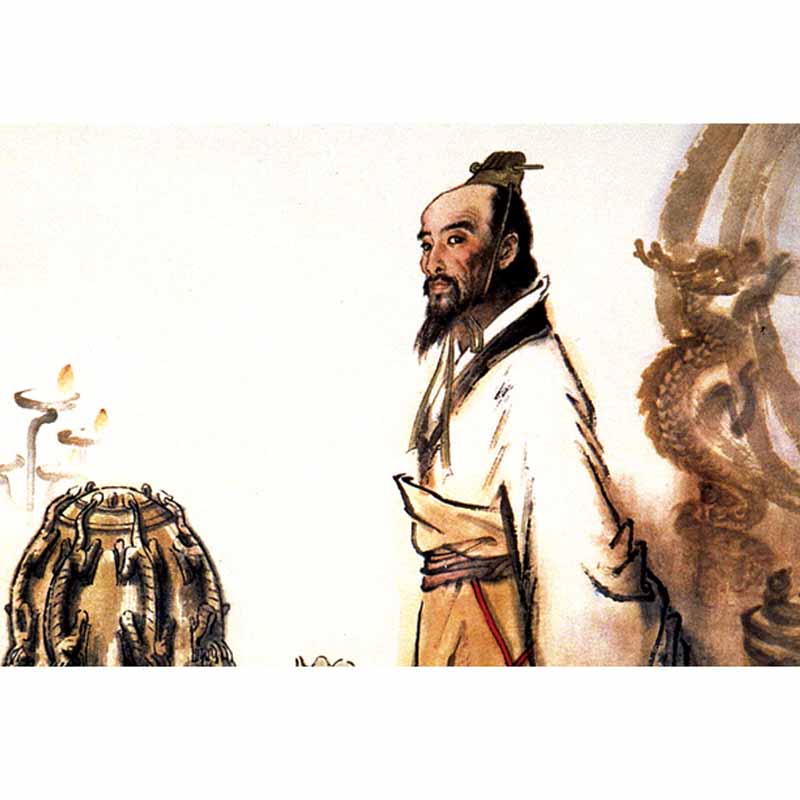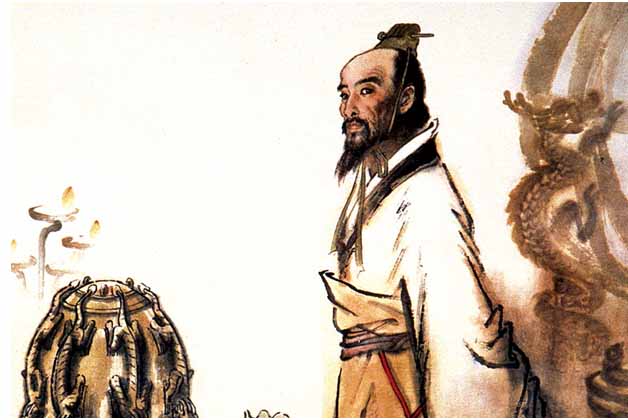
The industrialization of Western Europe during the 15th to 18th centuries was one of the driving forces that initiated the development of science and technological innovation in the region. This era saw the emergence of brilliant mathematicians, scientists, and inventors such as Leonardo da Vinci, Galileo Galilei and Andreas Vesalius who pioneered in the fields of mathematics, art, astronomy and medicine.
But as the West started its rapid development, so too did the East, with the Middle Kingdom, China, emerging as one of these centers of learning in Asia.
Some scholars highlighted the arrival of foreign missionaries, most notably the European Jesuits, as the advent of more advanced scientific knowledge and technology in China. They brought with them instruments and tools such as clocks, maps, and diagrams, even accurately predicting an eclipse that Chinese astronomers did not expect.Having gained the respect of the Imperial Court, these westerners successfully penetrated the center of governance in China and became members of the inner circle of the reigning emperor.
Their expertise in astronomy, cartography, and geography also gained them the favor of the learned society, landing them various posts in the government. While that school of thought has its own merits, other researchers have proposed the idea that scientific innovations in China is different from our concept of “Western science.” These innovations were developed as a response to the need for more a practical, skills-based knowledge that can be used by merchants and businessmen.
Although foreigners may have contributed their own expertise to the Chinese literati at that time, it is noteworthy that local Chinese scientists and inventors had been very productive even before their arrival. The invention of gunpowder, compass, papermaking and printing, which are collectively known as the “Four Great Inventions,” attest to the ingenuity of the Chinese.
Block printing, for example, dates back to seventh century Tang Dynasty, which corresponded to the time when the study of nature was just a minor task primarily done by clergymen in Europe. Western philosophers such as Francis Bacon described such inventions as having changed the face of the world because of their impact.
Much older than the Tang Dynasty is third-century Han Dynasty. Science and technological innovation significantly flourished during this period with the development of papermaking, waterwheel, nautical steering rudder and the production of relief maps, among others.
One of the prominent Han scholars was the astronomer and polymath Zhang Heng (張衡) who invented the first seismoscope or seismological detector.
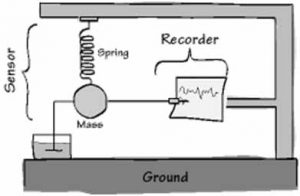
Zhang Heng was born in Nanyang, a prefecture-level city in the southwest of Henan province, and was one of the Han Dynasty’s prominent thinkers. He trained in astronomy, mathematics, cartography and even in the arts and poetry. His early training focused not on science but literature and his academic background was steeped in Confucian philosophy.
It was only when he reached his 40s that he started paying more attention to science, particularly astronomy. He published a catalog of stars and invented a water clock that accurately measured the time of a day. These, together with his other accomplishments in wooden machines and literature, earned him the confidence of the emperor, who made him one of his consultants.
One of Zhang’s outstanding brainchild is his prototype seismoscope which tried to detect the direction of the source of earthquakes.
Originally called hou feng di dong yi (候風地動儀), this instrument tried to monitor the movement of the ground from kilometers away. This Han Dynasty seismoscope predates the 1755 Lisbon earthquake which is considered by some scholars to be the birth of modern seismology, the science dealing with earthquakes, their origins and mechanism.
Centuries before the West started to study earthquakes in a systematic and scientific manner, Chinese scholars like Zheng Heng started to think and device instruments that can help them in preparing for impending ground movements. Today, scientists measure the amplitude of seismic waves using a sensor called a seismometer and a recording device connected to it. This device employs inertia which is the tendency of objects to resist any change in motion. Its mechanism can be compared to a weight suspended on a spring.
During an earthquake, the frame to which the spring and weight are connected moves together with the ground. The movement can be recorded in a rotating drum by a pen connected to the weight. Zhang Heng’s seismoscope is different. It can monitor the movement of the ground but it cannot record the same as the pen and rotating drum of a seismometer.
Early Chinese thinkers believed that earthquakes are brought about by supernatural causes and the disruption of balance in the universe (this balance is represented by yin and yang). There were other mythologies about the cause of earthquakes. For the Japanese, a giant catfish beneath the islands caused the ground to move, while the Chinese believed the earthquake was caused by an ox. In the Philippines, legends tell of the god of earthquake Panlinugun and the mythical Bernardo Carpio of Montaban, who causes earthquakes when he moves.
Other cultures and traditions have their own interpretation of earthquakes. Zhang’s theory described air as the main cause of earthquakes and not the interaction of tectonic plates. For him, air seeps through narrow cracks underneath and is compressed. When the stress is released, the ground starts to shake as the trapped air struggles to move out.
In order to determine the direction of an impending earthquake, Zhang designed an urn-shaped device with a pendulum inside and connected to eight dragon figures outside. These dragons are arranged so that they point to the four cardinal directions and the four secondary directions (e.g. northeast, southwest). Below each dragon is a toad figure with open mouth that can catch the metal inside each dragon’s mouth which could move and fall whenever there is ground movement. As the ball hits the surface of the toad, a loud sound is produced, serving as a warning for the court of the emperor.
Zhang Heng’s seismoscope’s reputation was bolstered when it was said to have detected an earthquake in the city of Longxi which was about 500 kilometers away from the location of the device. The emperor had it installed in the palace in the old capital city of Luoyang. But after Zhang Heng died, no one was able to regularly check and calibrate the device which led to its deterioration.
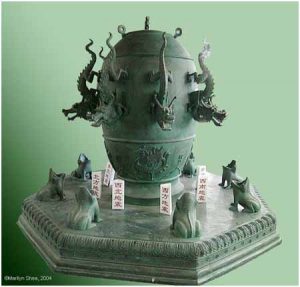
Modern researchers have tried to reconstruct Zhang’s seismoscope based on the description found on written records of the imperial court. Scholars who have tried to rebuild the seismoscope included H. Kazumi, John Milne, Lee Shan-bang, T. Hagiwara and A. Imamura. These researchers proposed a number of possible designs which tried to use the configuration of the original with the pendulum, eight dragons, and their counterpart toads.
Zhang Heng was the first Chinese scholar to venture into the problem of determining the direction of the source of an upcoming earthquake. Of course, today’s scientific perspective and detection of the origin of seismic waves is not as direct and as simple as the theory forwarded by Zhang Heng’s seismoscope.
The complexity of the possible path that seismic waves can take as well as the geology of different areas makes seismic wave detection not as direct as what Zhang Heng’s instrument was proposing. Now that disaster risk reduction and management have made people from across different sectors of society realized its value, it is interesting to look back at how our ancestors tried in their own ways to adapt to the challenges of natural hazards and how they utilized their ingenuity and creativity.
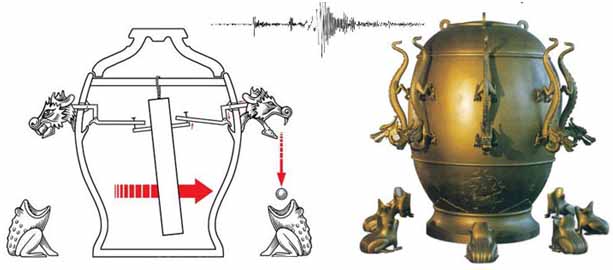
Zhang Heng, without being exposed to the ways and processes of other scholars including Western counterparts, successfully crafted what can be called as the first earthquake detector of China (and possibly of the world). Although the methodology and accuracy of his seismoscope can be questioned in the light of what we now know regarding the study of earthquakes, he still deserves our accolade and respect. We should also treasure the fact that regardless of origin or race, humanity’s collective wisdom can lead to a deeper relationship with Nature and all of her laws.
Photo credits: Roger-Viollet/REX/Shutterstock; https://d1o50x50snmhul.cloudfront.net; Charles J. Ammon; http://eqseis.geosc.psu.edu; Marilyn Shea (2004); http://hua.umf.maine.edu; David J. Leeds (in 2014 CUREE Calendar Earthquake Mythology); http://www.curee.org; D.V. Rogers; http://seismoscope.allshookup.org
